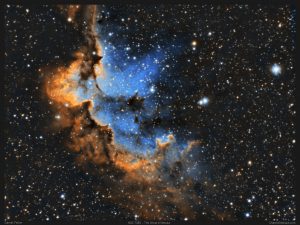At this stage of our preprocessing flow, we have our images calibrated, cosmetically corrected, graded, aligned, normalized and integrated. We can now boost the pixel density with drizzle integration
Drizzle integration is an optional step that you must decide if you want to do it. You will get more detail when zooming in, but it also quadruples the size of the files and significantly increases the time to to run through all remaining processes.
NOTE: If you do drizzle integration you CAN NOT do Mure Denoise, but there are other ways to perform noise reduction. After an analysis between Mure Denoise or Drizzle Integration with Noise Reduction, I’ve determined that the baseline image will help me decide on the approach.
This is how an integrated image looks with and without drizzle integration


At this scale, it is sometimes hard to see the differences, but the Drizzled imaged does appear to be smoother. Zooming in even more, you can easily see the smoothness around the stars.


Of course this is an extreme zoom and not usually done. But drizzle integration will allow you to create larger prints of your work.
In order to use Drizzle Integration effectively, you need a lot of images. At a minimum, you want 30 images, but the best results happen when you have 60 or more.
Drizzle Integration Settings
Drizzle integration is quite straightforward
- Input Images:
- Images: Select the drizzle images you wish to integrate.
- L.Norm: Select the local normalized files that correspond to the images
- Drizzle
- Scale: This is the multiplication factor. Usually 2 is enough as it will increase the file size by 4X.
Tips
When trying to create a zoomed in subsection of an image, drizzle integration is quite useful. The scale factor can even be increased beyond 2 to try and get a little more detail in a scenario where the field is cropped and requires enhancement, as shown in the next image.
Even through the cropped image is zoomed in, the overall quality and smoothness was not impacted due to drizzle integration
What’s Next
This completes the Pre-Processing workflow as we now have a master image for each filter. It is time to begin the Linear Image Processing flow.


